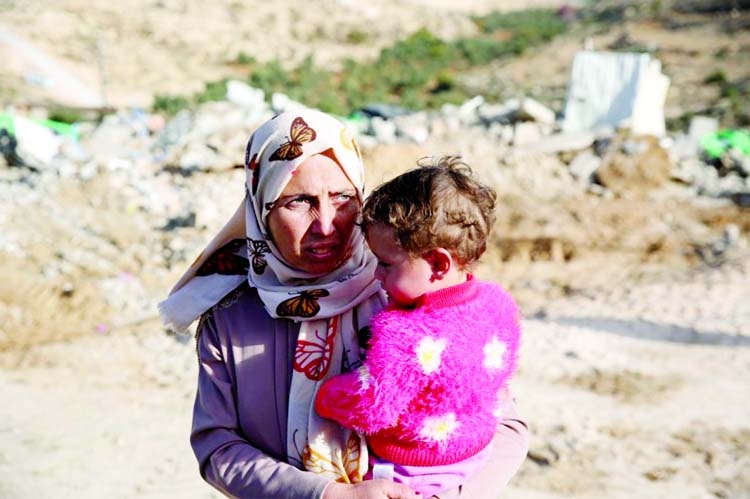
Al Jazeera :
The Israeli High Court of Justice is expected to decide over the next month whether an area in the occupied West Bank – where Palestinian Bedouin communities have resided long before the Israeli occupation – will continue to be used for military purposes.
Masafer Yatta, located south of the city of Hebron, spans some 36km (22 miles) and is comprised of 19 Palestinian hamlets that are home to more than 2,000 people.
The Israeli army designated part of the area a closed military zone for training in the 1980s, and “they have sought to remove the communities on this basis,” according to the United Nations.
Masafer Yatta is classified as being at risk of forcible transfer, in what the UN describes as coercive environment conditions” created through “a range of policies and practices that have undermined their physical security and sources of livelihood”.
Residents are forced to evacuate their homes during military exercises for temporary periods that could last days, while helicopters roam above the heads of the communities and heavily armed Israeli troops are present on the ground.
In addition to using the area as a training zone, Israeli authorities have expropriated thousands of dunams of land from residents to establish illegal Israeli settlements, including Ma’on and Havat Ma’on, and whose residents carry out attacks against the Palestinian communities. A dunam, an Israeli term for a unit of land area measurement of land, is equivalent to 1,000 square metres (0.2 square acres)
Israeli settlements are considered illegal under international law.
“Israel wants this land because it’s the highest point in the south Hebron hills and is of strategic value for the growth of the Israeli settlements and outposts,” Masafer Yatta Mayor Nidal Yunis told Al Jazeera.
Masafer Yatta falls within Area C, comprising 60 percent of the occupied West Bank, which the Israeli occupation’s administrative body, the Civil Administration, reserves largely for the benefit of Israeli settlers.
The occupied West Bank was divided into Area A, B and C as part of the 1993 Oslo Accords.
Israel retains total control of Area C while the Palestinian Authority (PA) has been granted limited powers to govern Area A and B.
The Israeli authorities grant few building permits to Palestinians in Area C. “The designation of the area as a firing zone means that such permits are impossible to obtain,” the UN has said. The area is also not connected to water and electricity grids, which supply the surrounding Israeli settlements and outposts.
“The state forbids them to legally build their homes or connect to water and power grids, restricts their grazing land, and enables acts of settler violence in order to make their lives so unbearable that they will leave of their own volition,” Israeli rights group B’Tselem has said.
Civil Administration officials, accompanied by Israeli soldiers and Border Police equipped with bulldozers, have destroyed any attempts at building or efforts to connect to the infrastructure by the Bedouin communities.
Mayor Yunis said that on October 25, Israeli officials confiscated a tent set up by the community in the al-Mufaqara hamlet.”They also destroyed a dirt road leading from the community of Khirbet Khilet a-Dabe to the community of al-Fakhit and the main water line that serves the Masafer Yatta community was also demolished,” he added.
Israeli authorities have designated some 18 percent of the West Bank, or half of Area C, as military firing zones, in which any person is prohibited unless special permission is granted by the army.
Despite the prohibition, there are 38 small Palestinian communities – 12 of them in Masafer Yatta – home to more than 6,200 Palestinians located within these zones. Many of the communities were present prior to the army’s arrival and closure of these areas.

